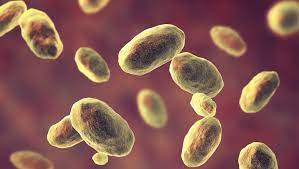Please click the frequently asked questions below for further information and IPC precautions required:
-
What is Yersinia Enterocolitica?
Y. enterocolitica is a common foodborne pathogen. Infection mainly occurs by ingestion of contaminated food or water, pork meat being a current contamination source.

-
Why is this information important?
If NIAS staff are aware that the patient is potentially symptomatic or a confirmed case of Yersiniosis then this should be communicated to EAC / NEAC and the receiving unit when transferring the patient to ensure effective patient care and management.
-
How is it spread?
Infection mainly occurs by ingestion of contaminated food or water, pork meat being a current contamination source.
It can also be spread via the faecal / Oral route.
-
What are the symptoms?
Infection with Y. enterocolitica typically manifests in children younger than 5 years as:
- Fever
- Diarrhoea
- Abdominal pain.
Relapsing disease and, rarely, necrotizing enterocolitis also have been described.
In adults and older children,
- Pseudo appendicitis syndrome attributable to mesenteric lymphadenitis
- Fever
- Abdominal pain
- Tenderness in the right lower quadrant of the abdomen
- Leukocytosis
A major complication of Y. enterocolitica-associated enteric infection is bacteraemia occurring mostly in children younger than 1 year and in older children with predisposing conditions, such as excessive iron storage and immunosuppressive states.
Extraintestinal manifestations of Y. enterocolitica are uncommon and include pharyngitis, meningitis, osteomyelitis, pyomyositis, conjunctivitis, pneumonia, empyema, endocarditis, acute peritonitis, abscesses of the liver and spleen, urinary tract infection, and primary cutaneous infection. Postinfectious sequelae with Y enterocolitica infection include erythema nodosum, reactive arthritis, and proliferative glomerulonephritis.
-
IPC Precautions
- Contact precautions should be used.
- Hand Hygiene should be completed as per the 5 moments in line with usual practice with Soap and Water
- Eye protection should be risk assessed and worn if any risk of splashes.
- Gloves and Aprons should be worn.
- The patient should be transported via ambulance with no other patients present.
- Laundry should be treated as contaminated, placed into an alginate bag and placed into a red laundry bag.
-
What cleaning is required?
All equipment and the ambulance should have an in-between patient clean, paying particular attention to touch points.
-
Do staff need any prophylaxis or follow up?
If staff have been exposed to a confirmed or suspected case of Yersinosis they should remain vigilant for any symptoms but there is no active follow up required.




